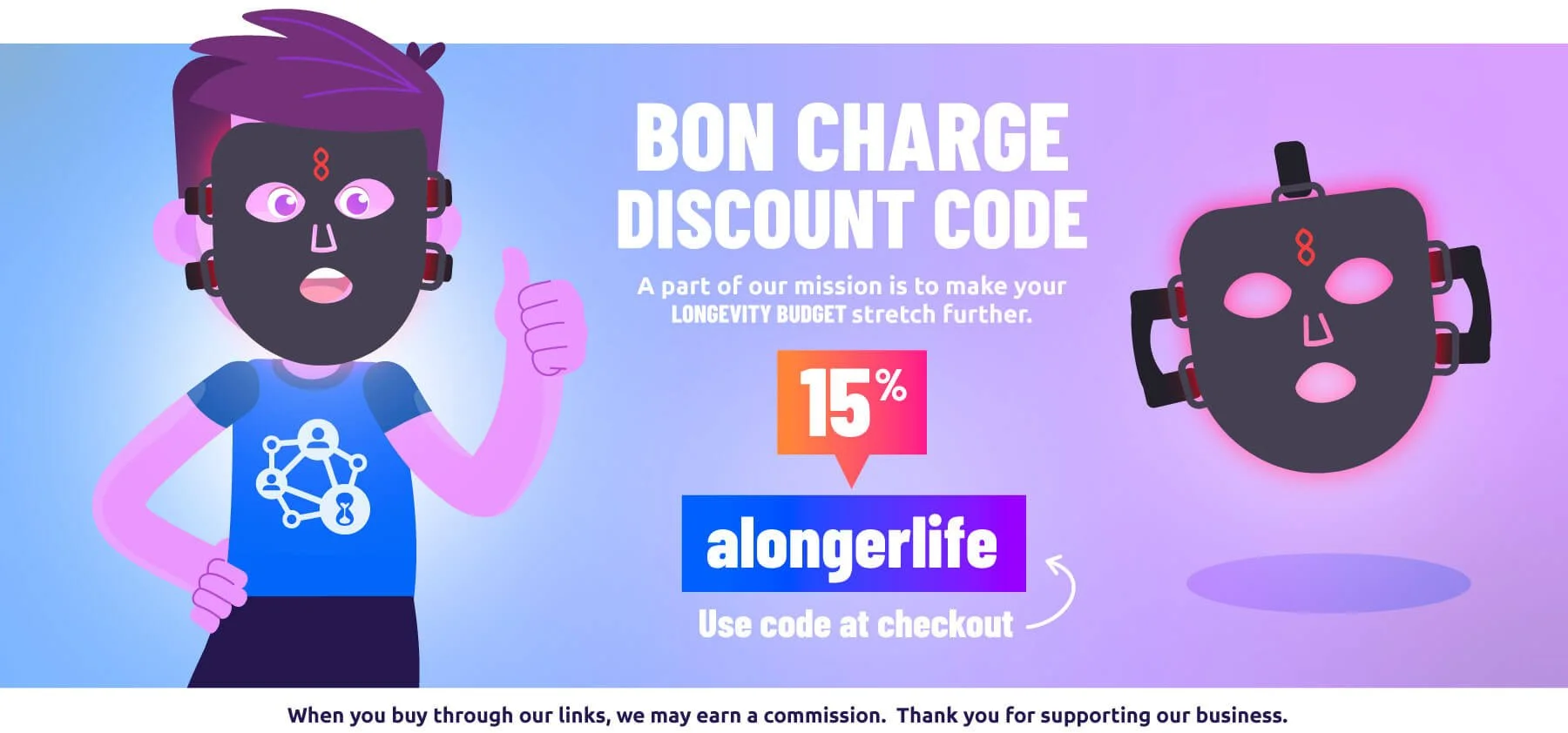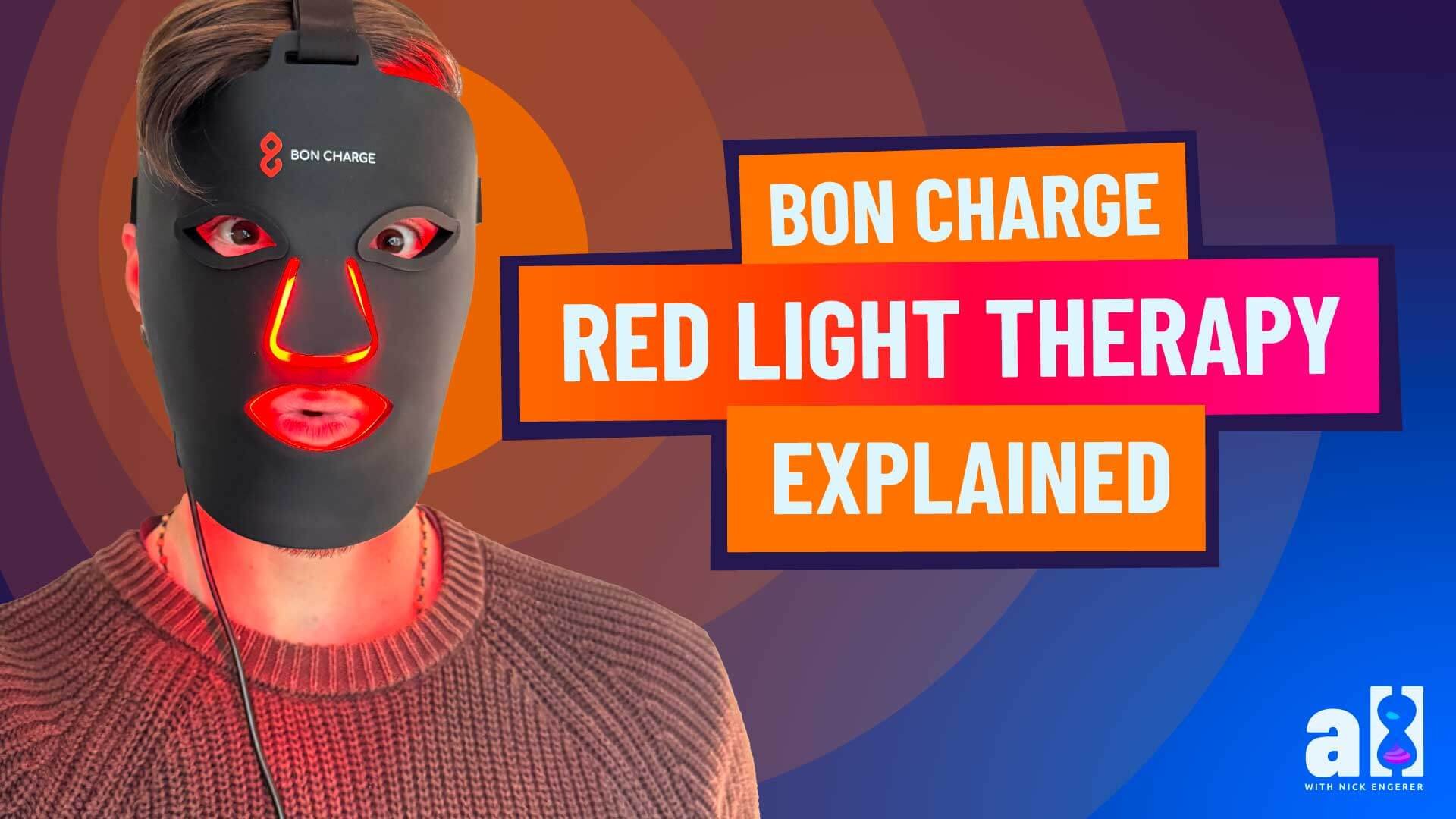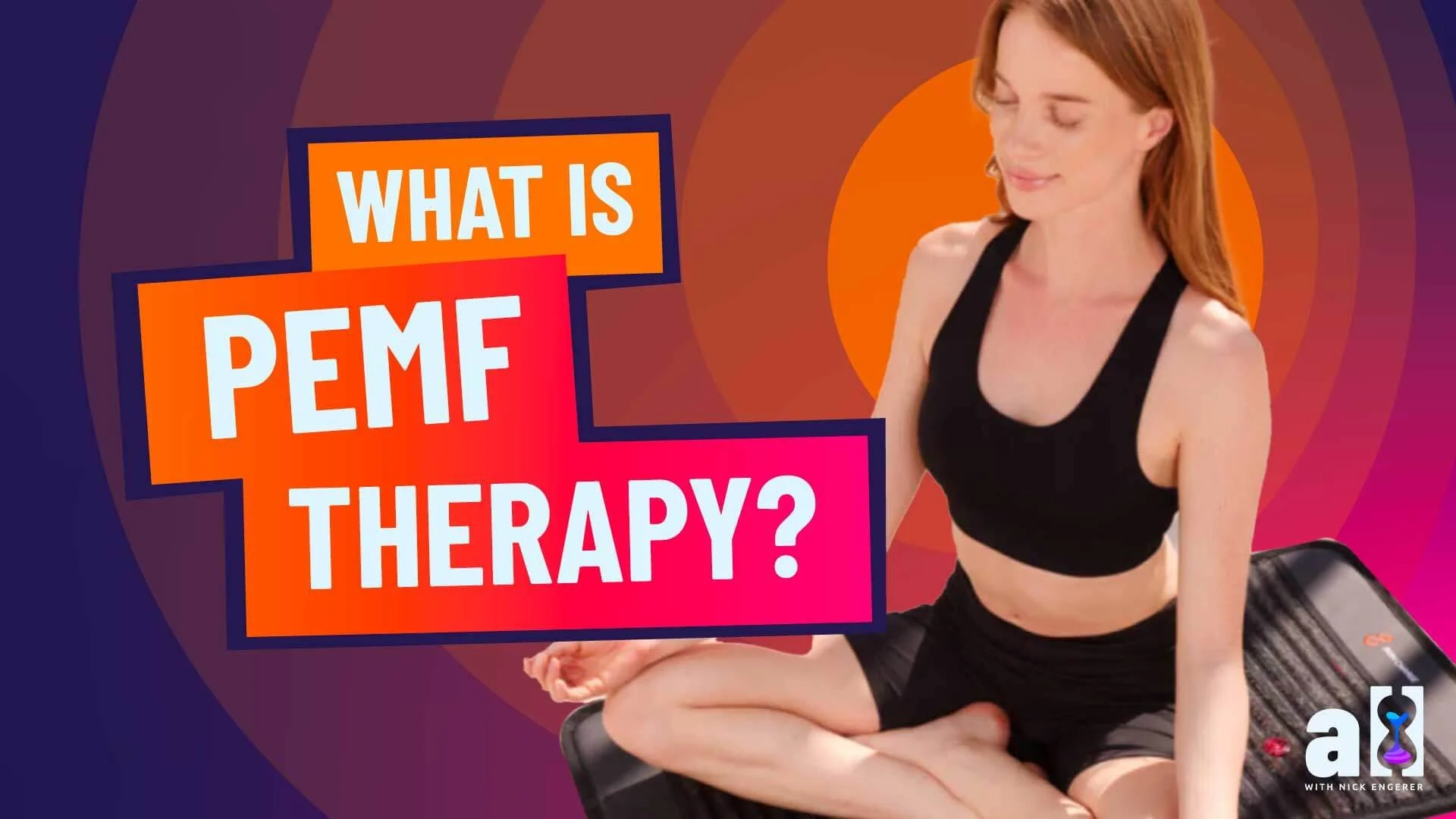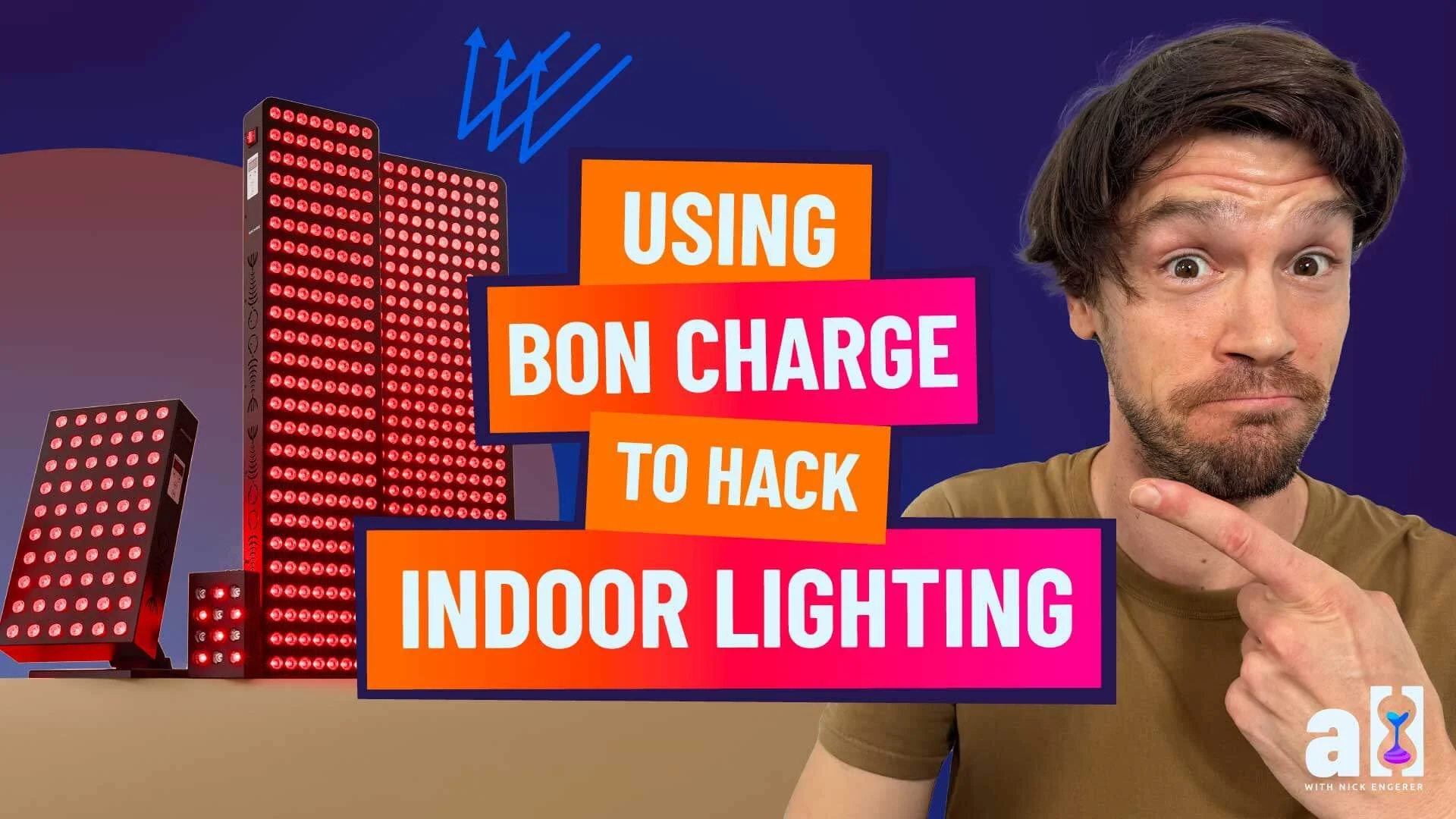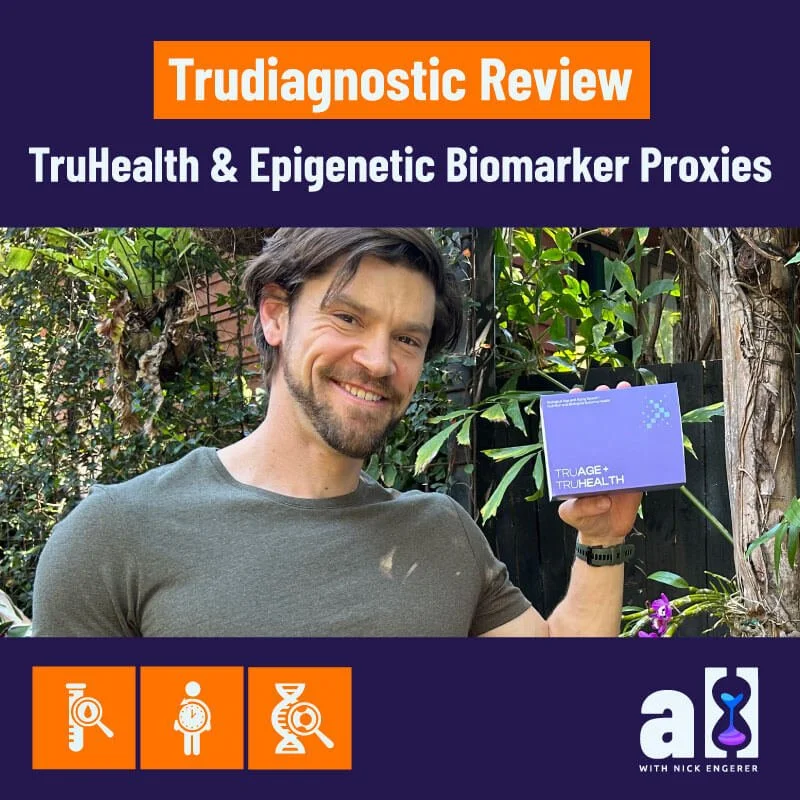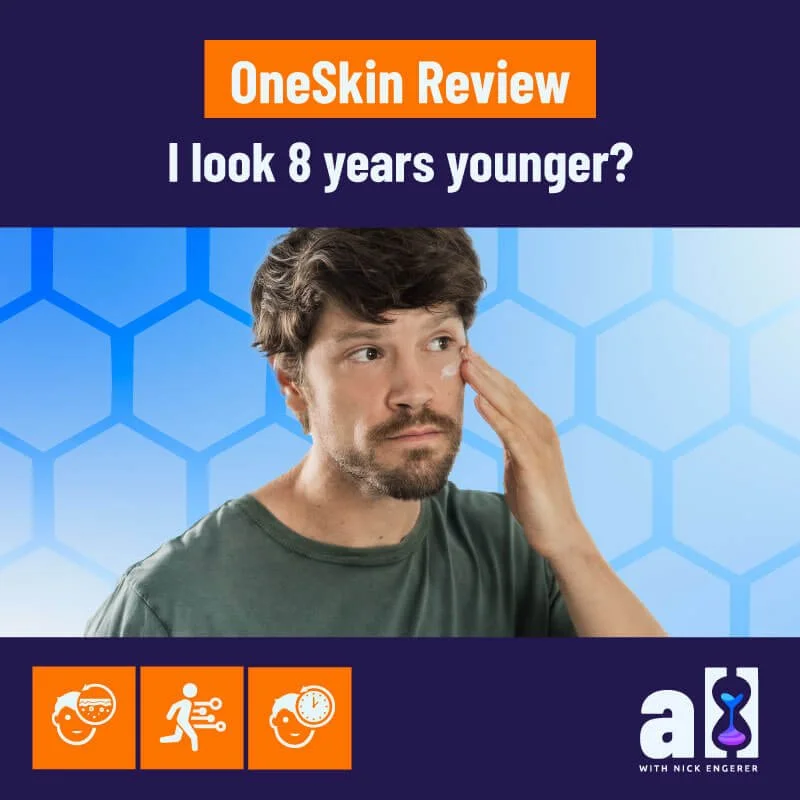Bon Charge Interview: Red Light Therapy, Blue Light Blockers, PEMF and Face Masks
Boncharge: Simplifying Wellness with Red Light Therapy, Glasses, and PEMF
My biohacking journey began in 2017 with a pair of Boncharge Onyx blue light blocking glasses. Unlike ineffective Amazon alternatives, Bon charge glasses transformed my sleep quality overnight. Whether I’m traveling or sharing them with friends, the response is universal: within 15–30 seconds, people feel relaxed, showcasing the power of Bon charge’s science-backed approach (see our Bon charge glasses review for details).
This experience echoes the origin story of Boncharge, founded nearly a decade ago by CEO Andy Mant. After overcoming a personal health crisis in 2014 through a ketogenic diet and sleep optimization, Andy discovered the impact of blue light (400–550 nm) on wellness. Frustrated by subpar products, he launched Bon charge with Bon charge blue light blocking glasses, setting the stage for a mission to “simplify wellness.”
Fast forward to 2025, Boncharge thrives globally, offering premium Boncharge red light therapy, Bon charge red light panels, Bon charge masks, circadian lighting, and Pulsed Electromagnetic Field (PEMF) devices. Each product, rigorously tested by Andy for six months before launch, blends cutting-edge design with peer-reviewed science.
In our exclusive interview with Andy, we explore:
Bon charge blue light blocking glasses: Red lenses for evening and yellow/clear for daytime to optimize circadian rhythms and ease migraines.
Boncharge red light therapy: Using red (630–660 nm) and near-infrared (830–880 nm) light to boost mitochondrial energy, aiding pain relief, skin health, and sleep, backed by over 4,000 studies.
Bon charge PEMF therapy: Low-level frequencies (up to 30 Hz) in mats combining PEMF, Bon charge red light, and gemstones to reduce inflammation and enhance sleep.
“Our mission is to simplify wellness by offering the world’s widest range of premium, science-backed technology together on one platform.”
Andy also shares his longevity routine, centered on morning sunlight exposure, stress management, and ancestral practices like eating high-protein meals and drinking clean water.
His top “free” biohack? Watch the sunrise daily to sync your circadian rhythm.
 |
Join us as we dive into this illuminating interview with Bon charge CEO Andy Mant, exploring how Boncharge red light therapy, Bon charge glasses, and PEMF can elevate your wellness journey.
From Health Crisis to CEO:
How Bon Charge Was Born Through Biohacking
A Longer Life:
I am really excited to be here with you in Sydney to talk about Bon Charge.
Andy Mant:
Thank you, it's incredible to be here. The sun is shining, it was raining yesterday so I made sure to get plenty of good light into me before this interview. I'm really happy about that.
A Longer Life:
You are the CEO of Bon Charge, a wellness technology brand on a mission to simplify wellness. You also have an incredible personal story. You actually founded Bon Charge through your own biohacking journey after facing a serious health crisis. That quest for better living became your purpose and passion.
Can you take us back to 2017 and tell us what inspired the founding of Bon Charge and what unmet need you saw in the wellness space?
Andy Mant:
Wow, 2017 feels like a long time ago now! Really, the story starts even earlier, around 2014. Back then, I was overweight, unhealthy, and in my late 20s. I started getting health issues that people normally face in their 60s such as kidney stones, appendicitis, things like that. It wasn’t good.
So I turned to diet as a way to intervene to stop that downward spiral. I tried all the conventional advice, low-fat, high-carb, calorie-counting... nothing worked for me. Eventually, I landed on the ketogenic diet, and that’s when everything changed. It kickstarted this incredible weight loss and health transformation. I’d never felt better.
How Bon Charge Glasses Fixed My Sleep:
The Science Behind Light and Melatonin
A Longer Life:
Why is blocking light between 400–550nm critical for quality sleep?
Andy Mant:
Because I had done it all myself, looking into studies and finding evidence to hack my own biology, I started wondering, what else is being impacted? Around that time, my wife and I were preparing for our wedding, and we both realized that sleep was a real issue for us.
So we started exploring how light impacts health and sleep, and that’s when we stumbled across a guy named Dr. Jack Kruse. He was really polarizing in the health world—people either loved him or hated him. And I always pay attention to people who stir things up like that.
I began following his work and learning a lot about light, and that’s when I discovered this key range between 400 and 550 nanometers. If you're exposed to that range of light after dark, it can suppress melatonin and really disrupt your sleep.
That led me to blue light-blocking glasses as a potential solution. I bought a pair on Amazon and wore them and after just one night, my sleep improved dramatically. These glasses are designed to block the blue light that interferes with melatonin production and, ultimately, your sleep cycle.
Bon Charge Red Light Therapy Explained:
How It Boosts Healing and Energy at the Cellular Level
A Longer Life:
We’ve talked about red light therapy a few times here already and it’s the first topic I want to go a bit deeper on with you.
What is red light therapy, and why does it help us biologically? What’s it actually doing in the body?
Andy Mant:
It's not always the easiest thing to explain, but I’ll break it down as simply as I can.
Red light therapy is all about harnessing therapeutic wavelengths of visible and invisible light, and shining those frequencies onto the body to boost energy production in your mitochondria. When you do that, you increase the body’s ability to repair and restore itself at a cellular level.
So if you have sore muscles or joints, applying red light therapy makes more energy available at the site which allows faster and more effective healing. Whether it’s for skin health, muscle recovery, or joint pain, it works on the same principle.
If we go a bit deeper, the most bioactive light wavelengths in humans are between 630 and 660 nanometers, that's red light. These are the most studied and shown to be effective in enhancing mitochondrial function.
There’s also an invisible wavelength range, between 830 and 880 nanometers, known as near-infrared light. It penetrates deeper into tissues and provides even more restorative benefits.
Near-Infrared Light and Why Irradiance Matters in Red Light Therapy Devices
A Longer Life:
What’s actually happening inside your cells during red light therapy?
Andy Mant:
Red light penetrates deeper into the cells reaching muscles and joints. But it’s not just about having the right wavelengths, the power output matters too. This is where something called irradiance comes in.
Irradiance is essentially power density. Without enough of it, shining red light on your body won’t be effective. You would get no real benefit from something like a flashlight unless the irradiance exceeds 50 milliwatts per square centimeter. That’s the minimum threshold for therapeutic results, and all of this is detailed clearly on our website.
At the cellular level, red light works by stimulating energy production in your mitochondria, specifically through a process called the electron transport chain. This process creates ATP Adenosine Triphosphate which is the energy currency of your cells.
A critical part of this process happens at what's called complex IV, or Cytochrome c Oxidase. This is the molecule red light therapy directly influences.
When your body is inflamed, whether from injury, stress, or aging nitric oxide levels rise. While nitric oxide has benefits, it also binds to Cytochrome c Oxidase and blocks oxygen from getting in. And oxygen is essential for optimal energy production. So when there’s less oxygen available, your cellular repair and energy systems slow down. Red light helps to reverse that by releasing the nitric oxide and allowing oxygen to flow back in, improving your cells' ability to produce energy and heal.
Bon Charge Red Light Therapy vs Near-Infrared: When to Use Each for Skin, Muscle & Sleep
A Longer Life:
Should we wear blue light-blocking glasses 2–3 hours before bed or right from sunset?
Andy Mant:
Trial it. See how you feel. See how your sleep responds. Red light therapy is the same. Does it work better for you at 6:00 PM, or for me at 8:00 PM? You've got to test it.
And that’s where I think people go wrong. They want a one-size-fits-all answer, like, “This is how you do it.” But that’s just not how biohacking works. It’s not how health and wellbeing should work. Everyone is different, and you have to experiment for yourself.
A Longer Life:
I love that answer, our audience will really appreciate that. I talk about N-of-1 experiments all the time. What you’ve just described is self-experimentation: measure, try something, measure again, and adjust. That’s the essence of biohacking.
Andy Mant:
Exactly. It’s a process of trial and error. You have to find what works best for you.
A Longer Life:
You mentioned something earlier, the different settings on the red light therapy panels. Is there a way to differentiate between near-infrared and red light in how you use them?
Andy Mant:
Absolutely. A lot of panels don’t have this option, but we found it essential people use red light therapy in different ways, so we built in flexibility.
You might want:
Just red light for skin restoration, to reduce wrinkles or signs of aging.
Just near-infrared light for deeper penetration, like for muscle and joint pain.
Or use both if, say, you have knee pain and also want better skin on your legs.
Our panels let you choose between all three options depending on your goals. It's about giving people customization for their own wellness journey.
What Is PEMF Therapy? How Bon Charge PEMF Biohacks Inflammation, Sleep & Brainwaves Explained
A Longer Life:
Bon Charge has also started working with PEMF Pulsed Electromagnetic Field therapy. I’ve worked with PEMF a little myself, especially to reduce inflammation in my hips from running, and it’s even helped me discover inflammation in areas I didn’t realize I had.
What is PEMF at its basics?
Andy Mant:
PEMF is a type of therapy that uses natural healing frequencies like those we find in nature and pulses them into the body. At a biological level, our body’s own electromagnetic fields start to mimic the incoming energy.
A good example is grounding or earthing standing barefoot on the earth. People often say it makes them feel amazing, reduces stress, inflammation, etc. That’s linked to something called the Schumann resonance, which is about 7.8 Hz the natural frequency of the Earth. When we connect with that, our body begins to resonate with that frequency and reduce inflammation.
There are studies showing that when people go barefoot, anti-inflammatory areas of the brain light up. PEMF builds on that idea, it takes that natural frequency (and others) and pulses them into the body.
Low-level PEMF, like what our products use, works up to 30 Hz. That’s for general wellness, improving sleep, grounding, and relaxation. Anything above 30 Hz moves into therapeutic PEMF, used more clinically for joint pain, cellular repair, etc. which isn’t what we’re targeting.
What we do is target brainwave states. For example:
Delta waves for deep sleep
Alpha and beta waves for creativity and focus
Around 7.8 Hz for grounding and meditation
It’s a bit like binaural beats, but through pulsed electromagnetic fields instead of audio.
We’ve also combined this PEMF tech into a multimodal wellness mat, adding:
Red light therapy (for skin and cellular rejuvenation)
Near-infrared light (for deeper tissue benefits)
Far-infrared light, like in saunas (to gently heat the body and increase heart rate)
All designed to simplify wellness and allow users to stack therapies in one session.
How Blue Light Triggers Migraines — and What Bon Charge Glasses Can Do About It
A Longer Life:
I want to go back to something really interesting you mentioned that I hadn’t heard before. The specific type of light we can block to help with migraines. A lot of people who suffer from migraines are willing to try anything to ease the pain. Tell me about light and migraines, and how Bon Charge glasses might help reduce symptoms.
Andy Mant:
Yes, exactly helping to reduce symptoms. People who experience photosensitive migraines, and there are many different types, often find that light is a major trigger. I personally used to get them about once a month, and since I started managing my light exposure, I only get one maybe every three years. That’s been a huge relief. They’re incredibly debilitating. You get the visual disturbances ocular migraines where your vision gets distorted, followed by a pounding headache.
There seem to be two main light-related triggers. The first is exposure to high-frequency, high-density blue light, specifically in the 400 to 455 nanometer range. That’s the range that most often triggers headaches in people who are light sensitive. Unfortunately, this range is found in abundance in artificial lighting LEDs, screens, and so on.
To block that, we created yellow-lens glasses. They block the entire 400 to 455 nanometer blue light spectrum completely while still allowing in blue light from 456 to 495 nanometers, plus all the beneficial red light after that. This reduces exposure to the most triggering wavelengths without eliminating healthy light entirely.
They’re also really useful after a migraine. Wearing them can block the light that might make the symptoms worse while you’re recovering.
Using Bon Charge to Hack Indoor Lighting for Better Sleep and Energy
A Longer Life:
What should we be doing during the day if we’re stuck indoors?
Andy Mant:
There are really three things. First, you want to filter down the copious amounts of blue light coming from your screens. You can do that by wearing blue light-filtering glasses either clear lenses or yellow ones. Clear lenses block about 30% of blue light. Yellow lenses block around 60%.
Someone might choose yellow lenses over clear if they’re more sensitive to light, or more prone to things like migraines. That extra protection can really make a difference.
Second, we want to add red light back into our environment. One way to do this is to place a salt lamp or a red light lamp near your computer while you work. This helps balance the light spectrum to mimic sunlight as closely as we can without actually going outside.
And that leads to the third point: go outside. Nothing artificial will ever beat natural sunlight. It’s what we evolved under. People take smoke breaks all the time which is a terrible habit so why not take “sun breaks” instead?
Go out mid-morning, let your naked eyes see the sun, and let those messages from nature hit your body. It trains your circadian rhythm to be optimal and functional. Eat your lunch outdoors instead of under those nasty overhead fluorescent lights in a canteen. Go outside again in the afternoon for another sun break. Then in the evening, watch the sunset while wearing your blue light filtering glasses indoors. And once the sun’s gone down, switch to your red lens blue light blocking glasses.
If you do that, you’re probably 90% of the way to what our ancestors experienced without giving up the modern world and going off to live in a field somewhere.
Inside a Biohacker and Bon Charge CEO’s Daily Routine for Circadian Health
A Longer Life:
Let’s walk through what a typical day looks like for you, especially during winter.
Andy Mant:
This varies by season, but let’s talk about what I do during the darker winter months.
I usually wake up about 30 minutes before sunrise and I don’t need an alarm clock. My circadian rhythm is so well entrained after eight years of living this way that my body just knows when to wake up, no matter what time zone I’m in. Whether I'm in the UK, the US, or Sydney, it self-corrects thanks to the protocols I’ve built over the years.
The first thing I do is put on my blue light blocking glasses. Then, as the sun starts to rise whether it’s cloudy, raining, or clear I go outside in just my underwear. I want as much skin exposure as possible so I can fully absorb that early light and send the right signal to my body clock. That morning light helps kickstart cortisol, dopamine, serotonin all the key hormones for energy, mood, and motivation.
Then I come back inside and meditate for 15 to 20 minutes to get into a focused and positive mindset for the day.
I don’t look at my phone for at least two hours after waking up. I think that’s a huge one so many people reach for their phones first thing and fill their minds with stress or blue light. I avoid that completely.
Next, I train on an empty stomach. I find I perform best that way. After my workout, I have my breakfast which is my biggest meal of the day. It’s high protein, high fat, and timed for when my gut is most ready to digest and use those nutrients. Research shows that between 9 a.m. and 12 p.m. is the optimal eating window for gastrointestinal function, based on circadian biology.
During the workday, I wear yellow lens blue light filtering glasses. I use these because I’m prone to migraines and they really help me manage that. I’ve also placed red light lamps around my workstation, and I know others in the office are starting to do that too.
I take regular “sun breaks”every 30 minutes. I go outside for a few minutes of natural light. I don’t sit near closed windows because window glass filters out key light frequencies. If I’m near a window, it’s always open.
Throughout the day, I drink reverse osmosis water with Celtic sea salt to replenish minerals. In summer, I leave bottles of water outside to absorb UV and infrared light. This helps turn the water into “EZ water,” which is more bioavailable and supports mitochondrial health. I don’t do that in winter. It's too cold and the water would freeze in the UK.
In the evening, I go outside again to watch the sunset with no glasses on so my eyes can register the changing light. Then, once the sun has gone down, I put on my red lens blue light blocking glasses and switch on circadian-friendly lighting in the house.
I’ll usually read a bit, and then I do some kind of wellness tech session. It might be PEMF, an infrared sauna blanket, red light therapy, or just lying down to relax. I listen to what my body needs. Some nights I stack the technologies like using a face mask while in the sauna. It all depends on how I feel.
Want to learn more? Watch the full interview
 |






